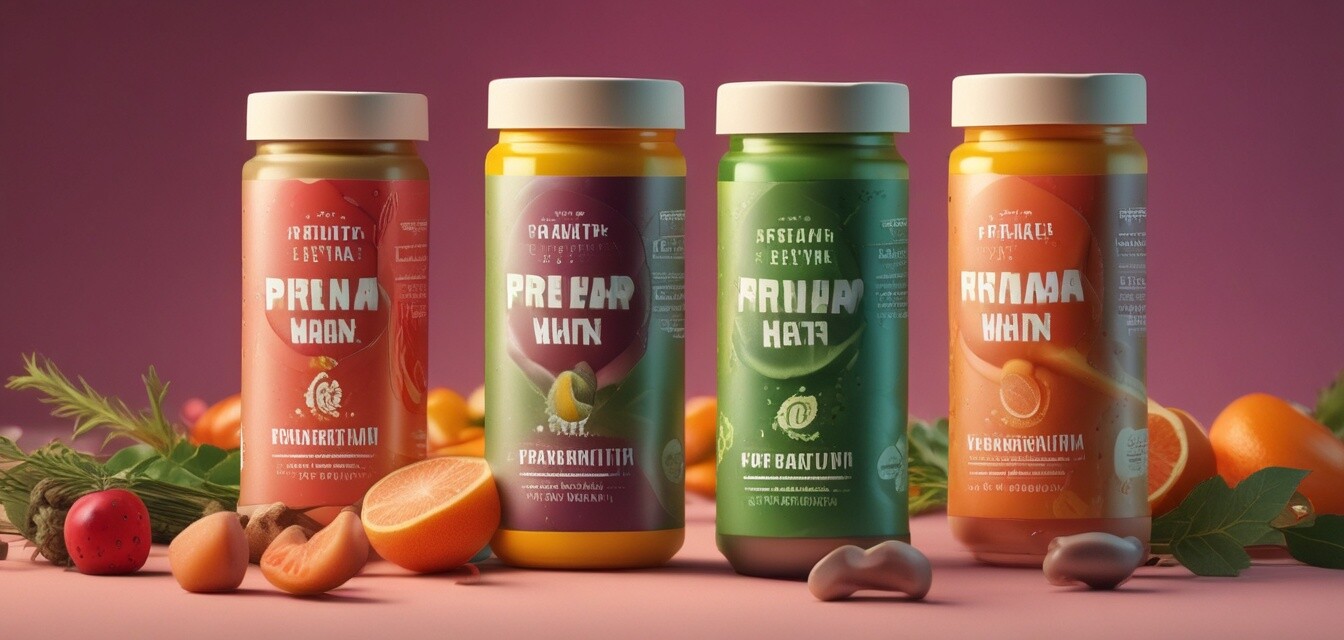
Innovations in Prenatal Vitamin Packaging
In recent years, the market for prenatal vitamins has seen significant advancements in packaging. These innovations are designed not only for practical use but also to resonate with eco-conscious consumers. In this article, we will explore emerging trends that focus on sustainability, user-friendliness, and improved product preservation.
- Eco-friendly materials are on the rise.
- User-friendly designs improve accessibility for pregnant women.
- Innovative packaging enhances product freshness and effectiveness.
- Smart packaging technologies are being introduced.
- Modern aesthetics play a crucial role in consumer choice.
Sustainability: The New Standard
With global concerns about plastic waste, many companies are turning to sustainable packaging solutions. The use of biodegradable and recyclable materials is increasingly common. Below are some of the most popular sustainable packaging options in the prenatal vitamin industry:
| Material | Description | Benefits |
|---|---|---|
| Bioplastic | Derived from renewable resources, these plastics can decompose. | Reduces reliance on fossil fuels, lowers carbon footprint. |
| Glass | Reusable and recyclable, glass helps minimize plastic waste. | Maintains product integrity, aesthetically pleasing. |
| Metal | Aluminum or tin containers that are lightweight and recyclable. | Durable, provides excellent protection against light and air. |
| Paper | Used for boxes or wraps, often sourced from sustainable forests. | Compostable and biodegradable. |
User-Friendly Designs
User experience is a critical factor in the design of prenatal vitamin packaging. Here are the features that improve accessibility and ease of use:
- Easy-open caps: Many brands are opting for caps that are easier to open, which is crucial for pregnant women who may have increased sensitivity in their hands.
- Clear labels: Labels are being designed with larger fonts and simple color schemes for better visibility and understanding.
- Compact formats: Smaller, portable packages allow for easy transport and storage.
Improved Product Preservation
Ensuring the potency and effectiveness of prenatal vitamins is essential. Advances in packaging technologies are enhancing product preservation:
| Technology | Description | Benefits |
|---|---|---|
| Vacuum sealing | Removes air to limit oxidation. | Extends shelf life. |
| Moisture-proof materials | Block humidity to prevent clumping. | Maintains consistency and dosage. |
| UV protection | Packaging that blocks harmful light. | Preserves vitamin potency. |
| Smart packaging | Includes indicators for freshness. | Informs consumers when to replace the product. |
Smart Packaging: A Glimpse into the Future
With technology advancing rapidly, smart packaging is becoming a reality in prenatal vitamins. This innovative packaging can include:
- QR codes: Scanning these codes can provide consumers with additional information on ingredients and sourcing.
- Sensors: Sensors that detect when the product is no longer effective may be integrated into packaging, ensuring safety.
- App integration: Some brands are developing apps that sync with product packaging to provide reminders for consumption and other personalized tips.
Aesthetics and Brand Identity
Modern consumers appreciate aesthetically pleasing designs. Brands are investing in packaging that reflects their identity and resonates with their target audience. Considerations include:
- Color schemes: Soft, calming colors that convey a sense of health and wellness.
- Unique shapes: Innovative bottle and container designs that stand out on shelves.
- Brand storytelling: Packaging that shares the brand's story or mission, engaging consumers on a deeper level.
Pros
- Increased consumer awareness of sustainability.
- Enhanced user experience with convenient designs.
- Improved product safety and effectiveness.
Cons
- Higher manufacturing costs for sustainable materials.
- Potentially higher retail prices for consumers.
- Consumer education may be necessary for new technologies.
Conclusion
The prenatal vitamin market is evolving rapidly with innovative packaging solutions that focus on sustainability, user-friendliness, and improved product preservation. As more consumers become aware of the impacts of their choices, it is likely that these trends will continue to grow, shaping the future of prenatal nutrition. If you want to stay updated on the latest news and trends, or discover more about specific categories like certified gluten-free vitamins and chewable prenatal vitamins, our website has all the information you need.
